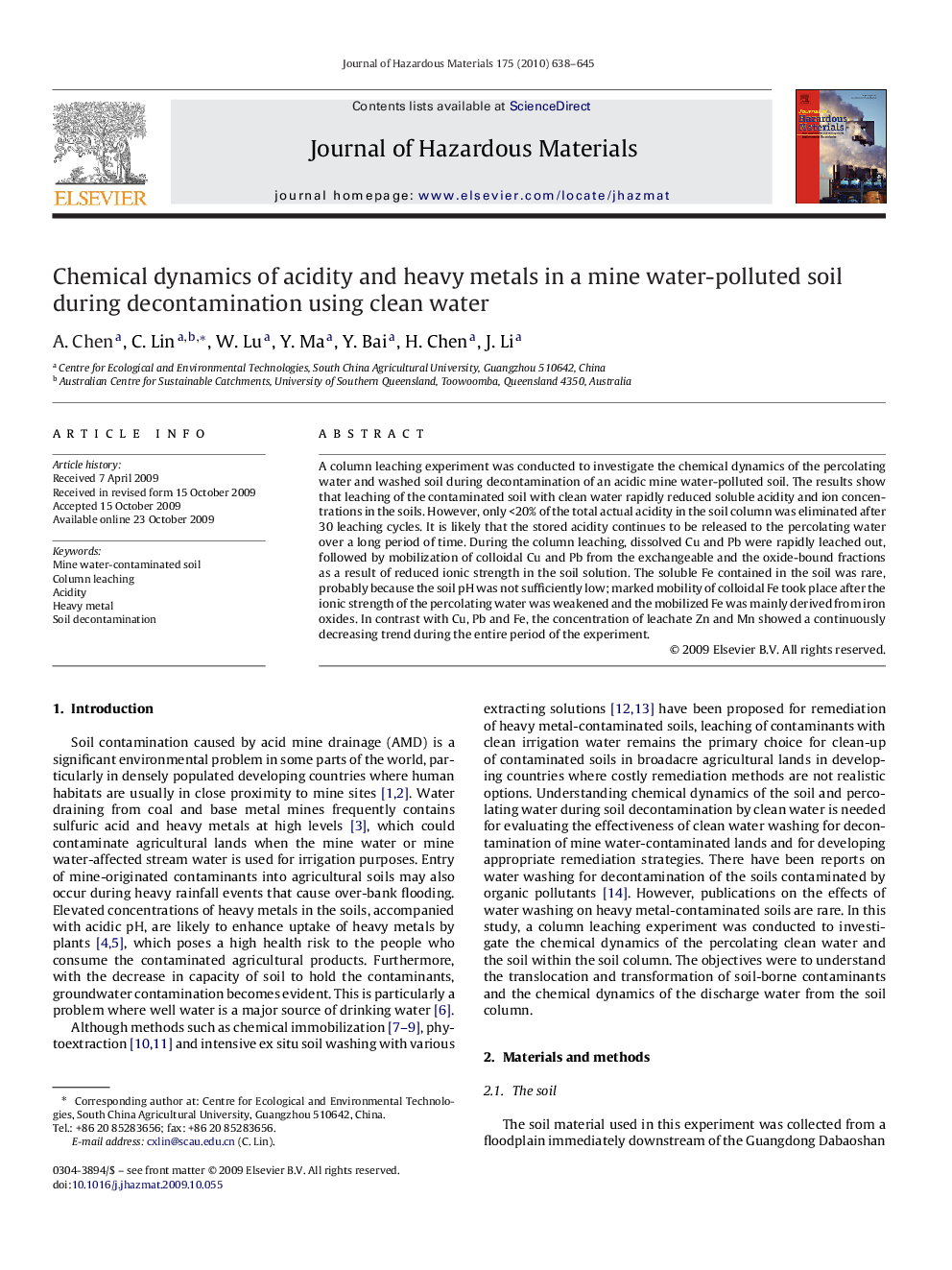| Article ID | Journal | Published Year | Pages | File Type |
|---|---|---|---|---|
| 580505 | Journal of Hazardous Materials | 2010 | 8 Pages |
Abstract
A column leaching experiment was conducted to investigate the chemical dynamics of the percolating water and washed soil during decontamination of an acidic mine water-polluted soil. The results show that leaching of the contaminated soil with clean water rapidly reduced soluble acidity and ion concentrations in the soils. However, only <20% of the total actual acidity in the soil column was eliminated after 30 leaching cycles. It is likely that the stored acidity continues to be released to the percolating water over a long period of time. During the column leaching, dissolved Cu and Pb were rapidly leached out, followed by mobilization of colloidal Cu and Pb from the exchangeable and the oxide-bound fractions as a result of reduced ionic strength in the soil solution. The soluble Fe contained in the soil was rare, probably because the soil pH was not sufficiently low; marked mobility of colloidal Fe took place after the ionic strength of the percolating water was weakened and the mobilized Fe was mainly derived from iron oxides. In contrast with Cu, Pb and Fe, the concentration of leachate Zn and Mn showed a continuously decreasing trend during the entire period of the experiment.
Related Topics
Physical Sciences and Engineering
Chemical Engineering
Chemical Health and Safety
Authors
A. Chen, C. Lin, W. Lu, Y. Ma, Y. Bai, H. Chen, J. Li,
